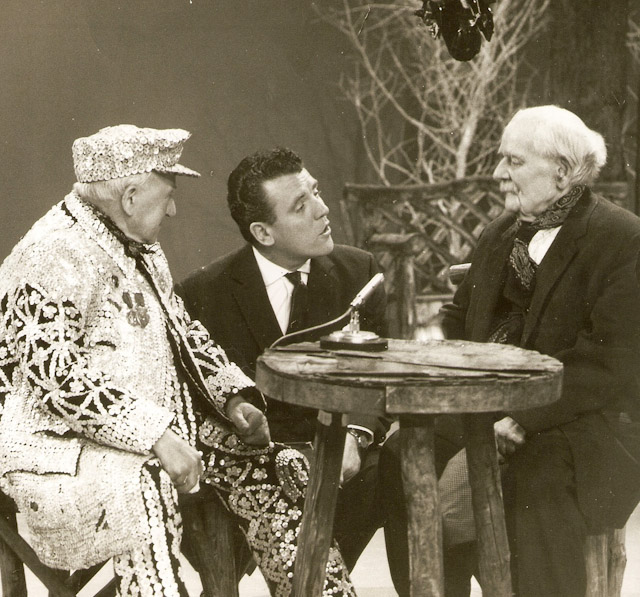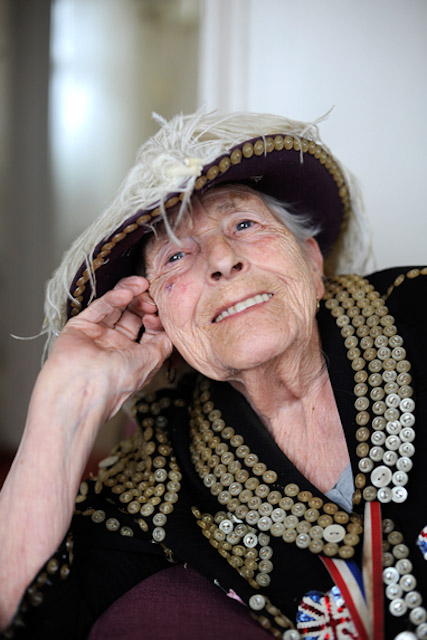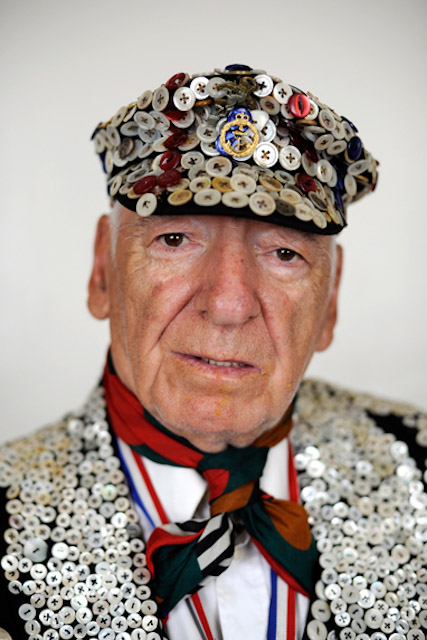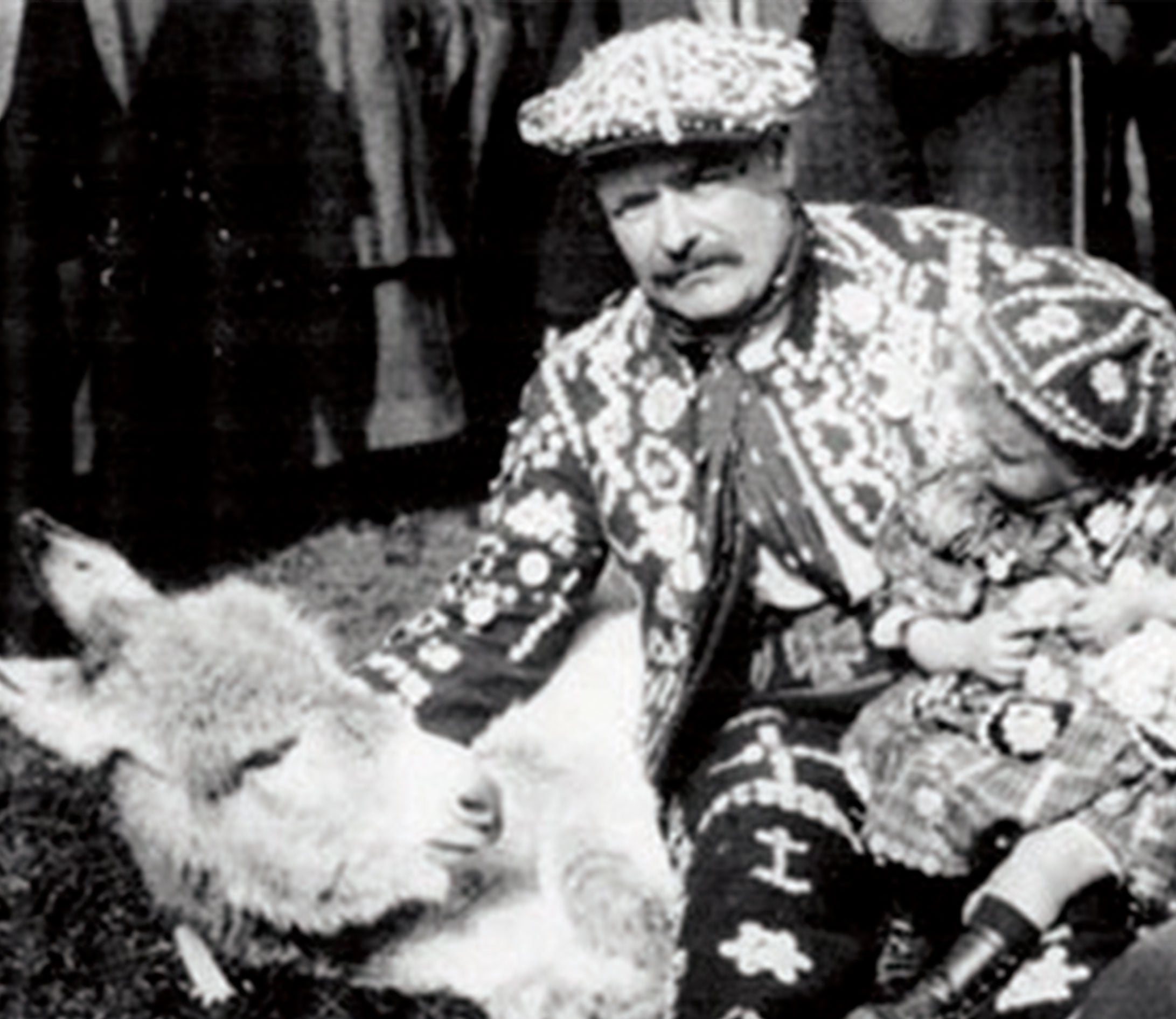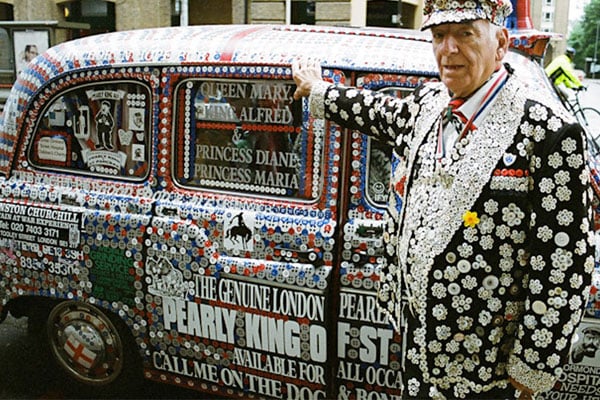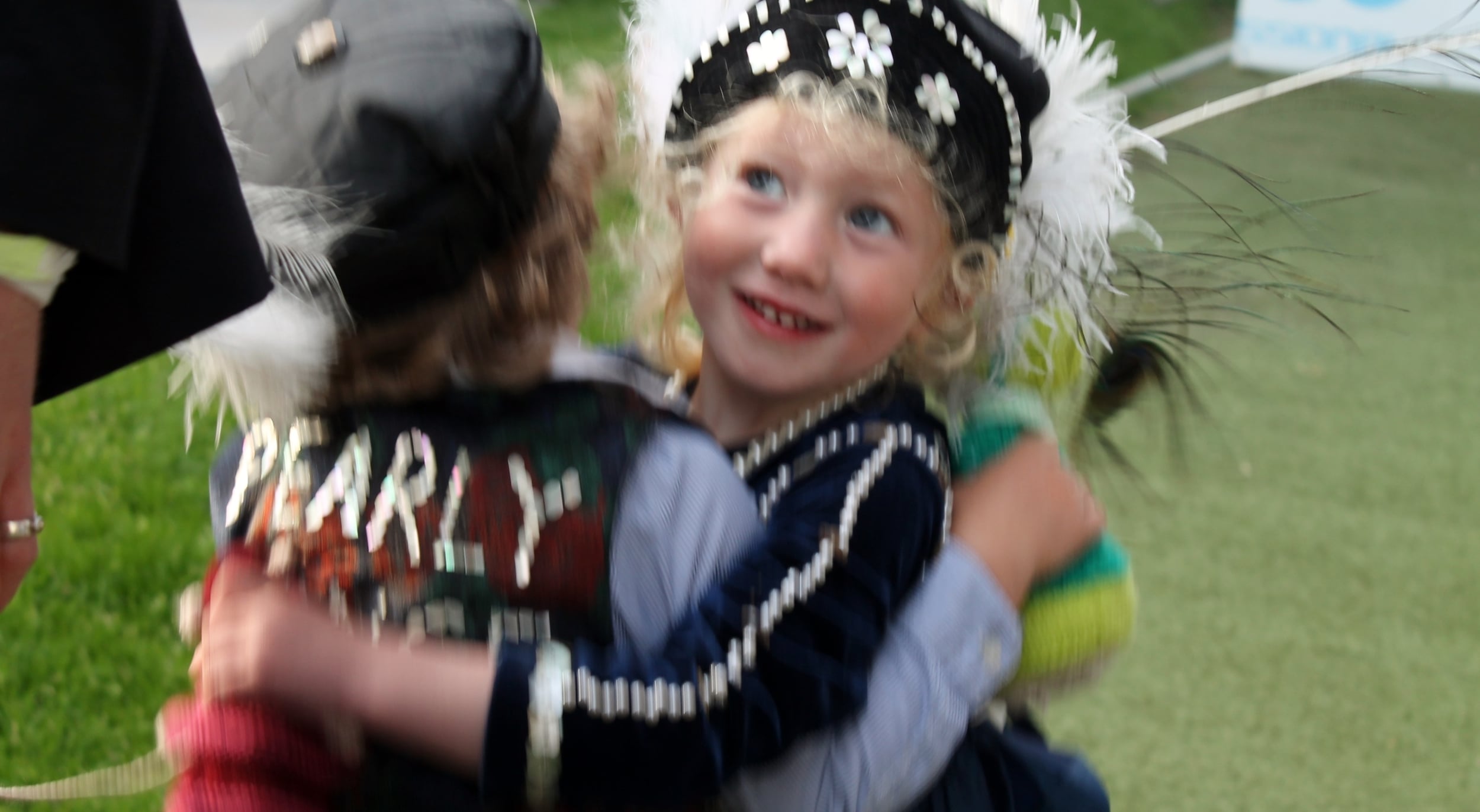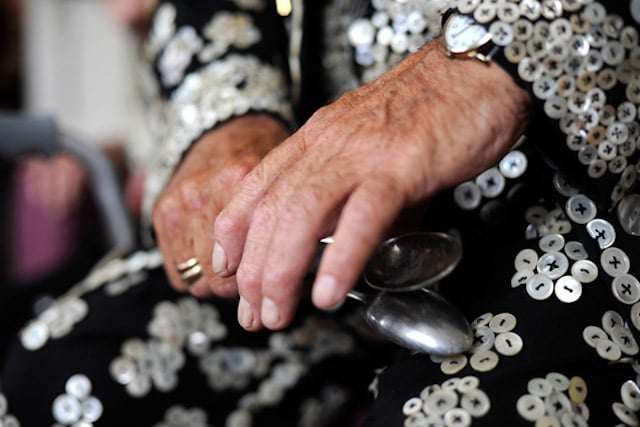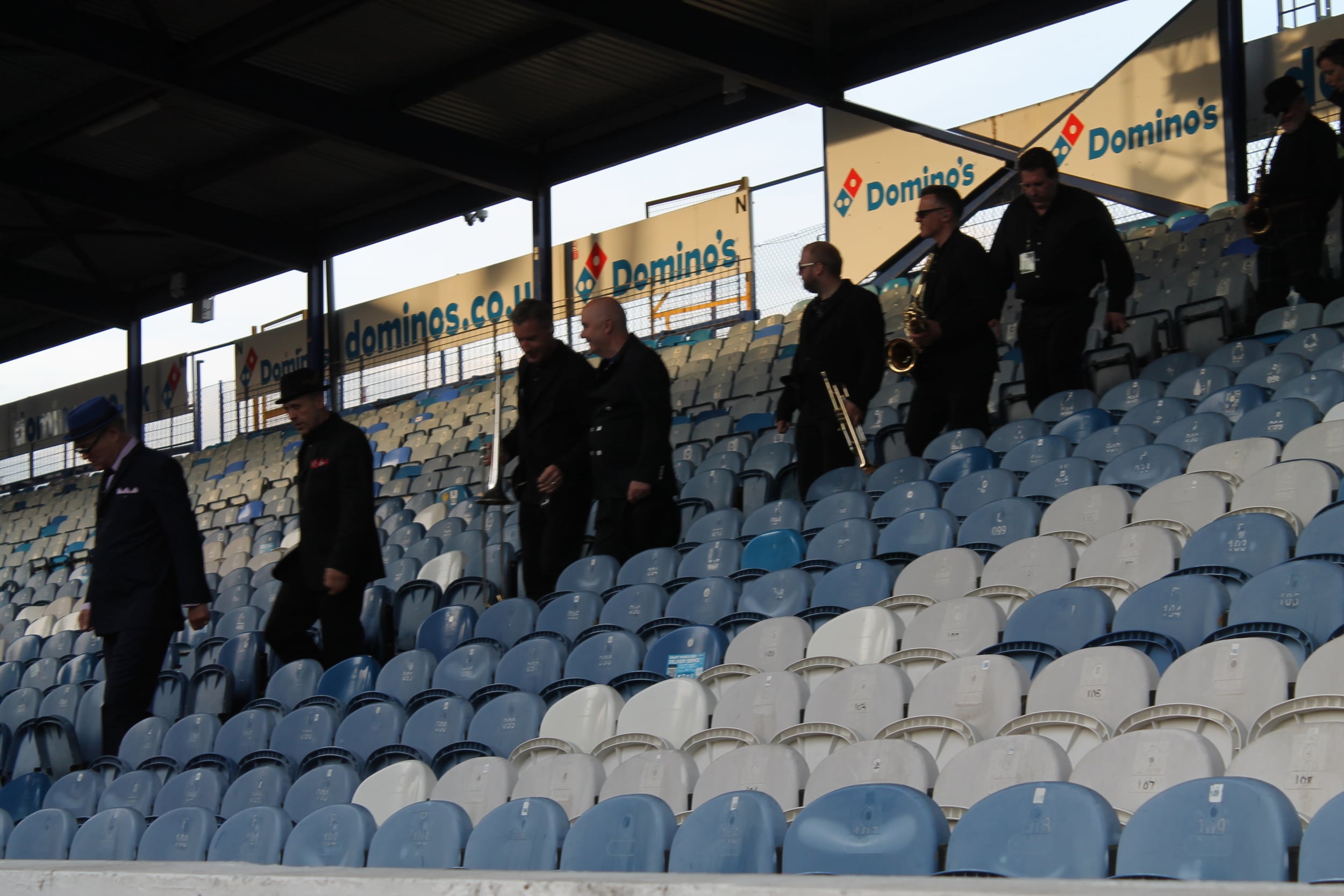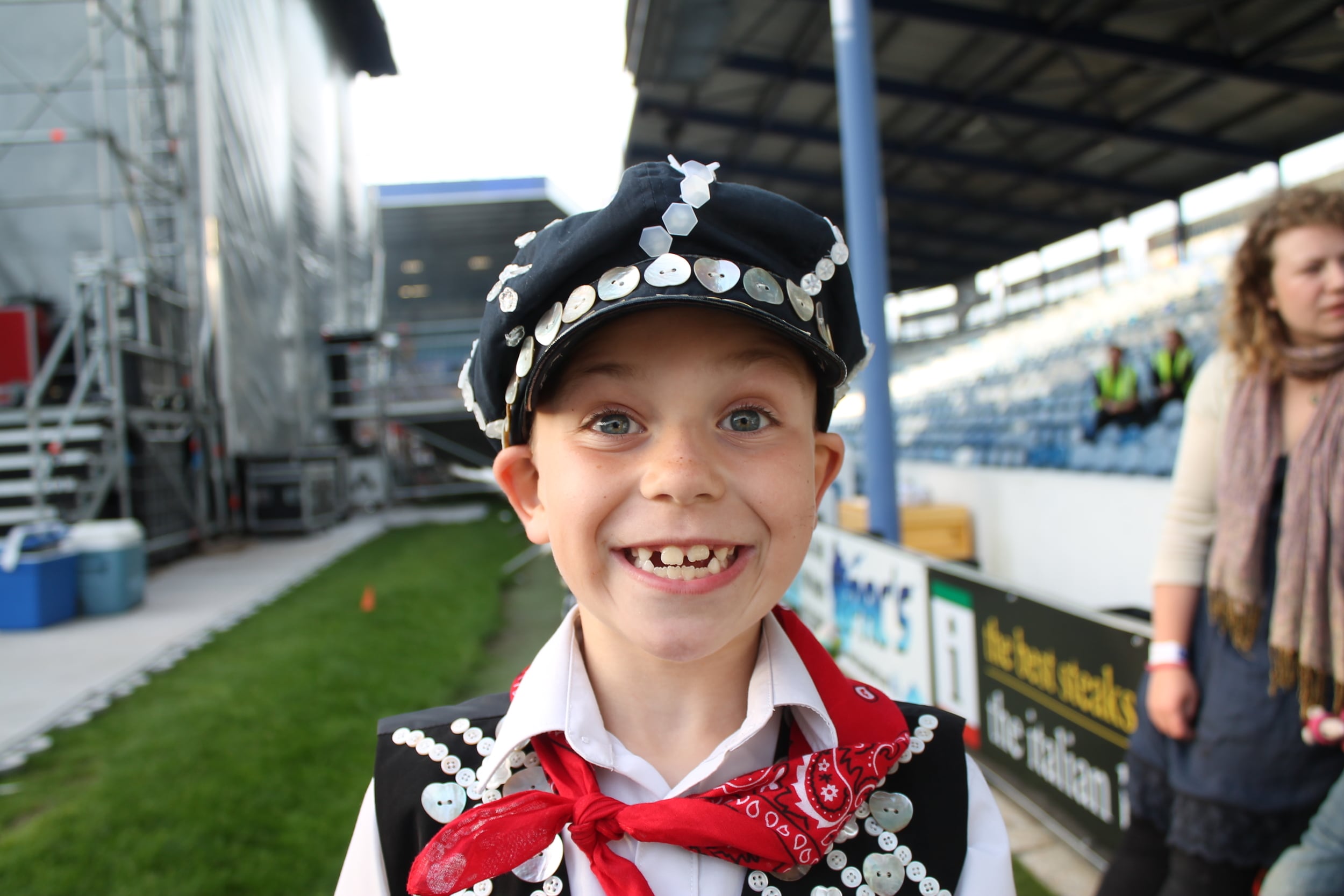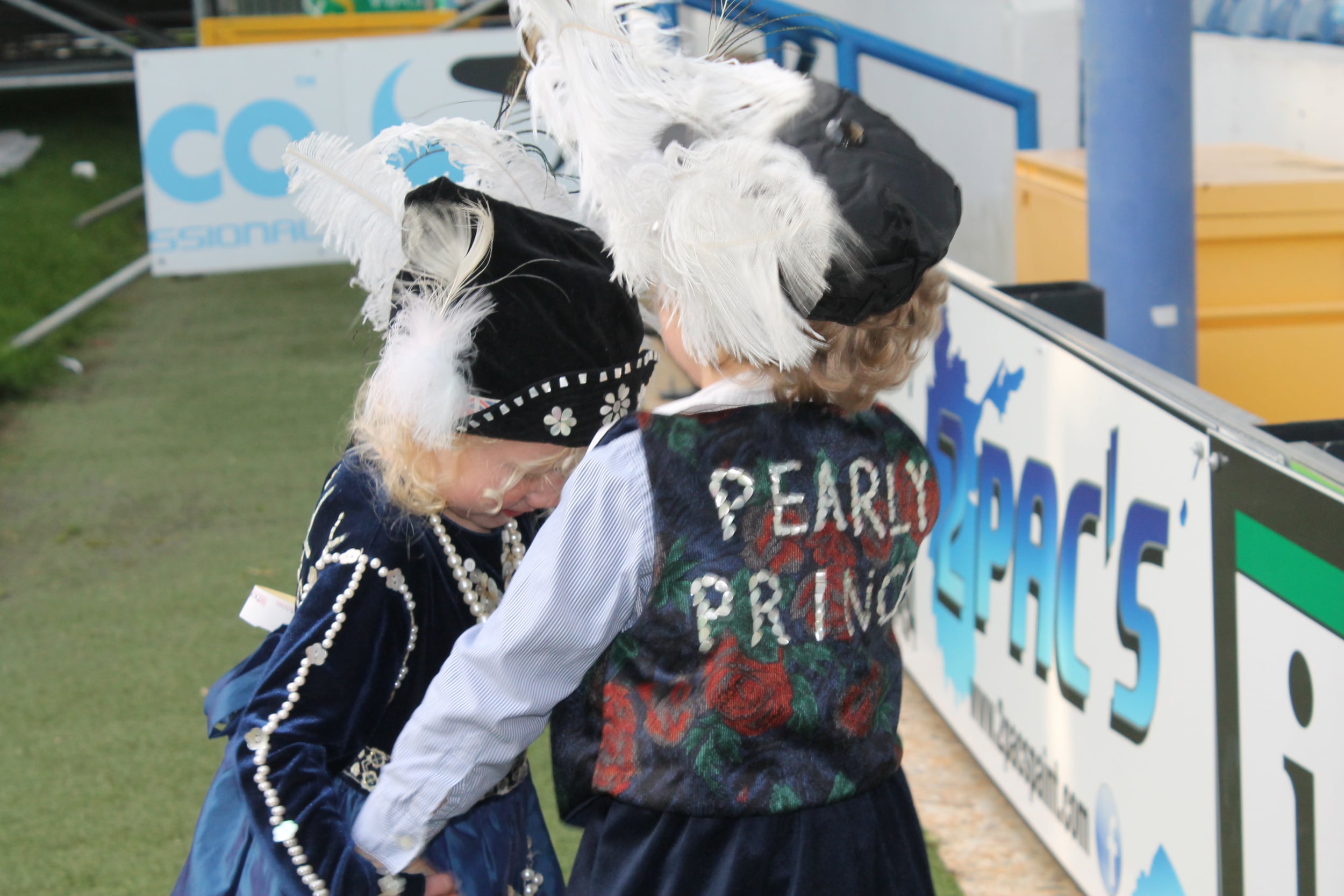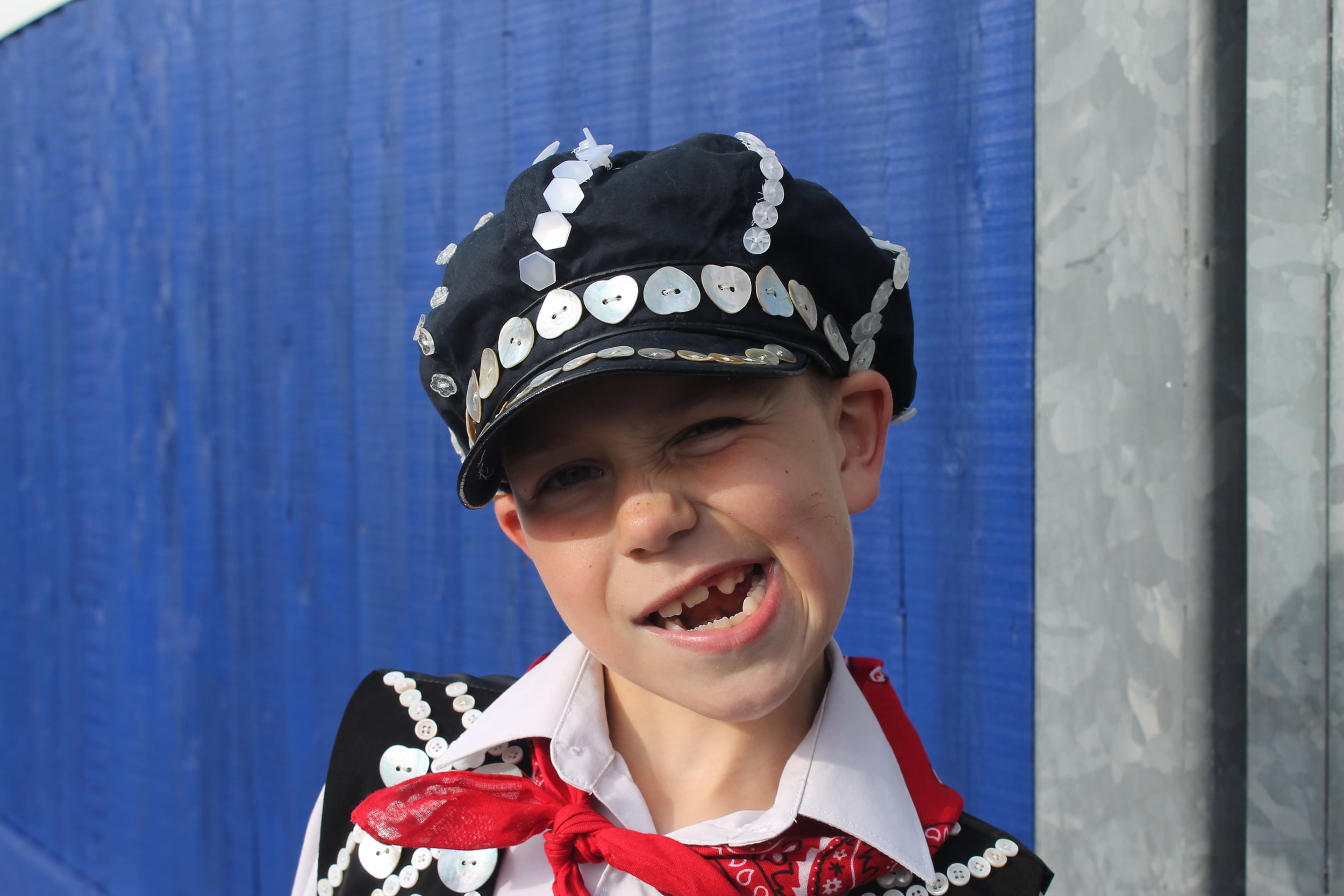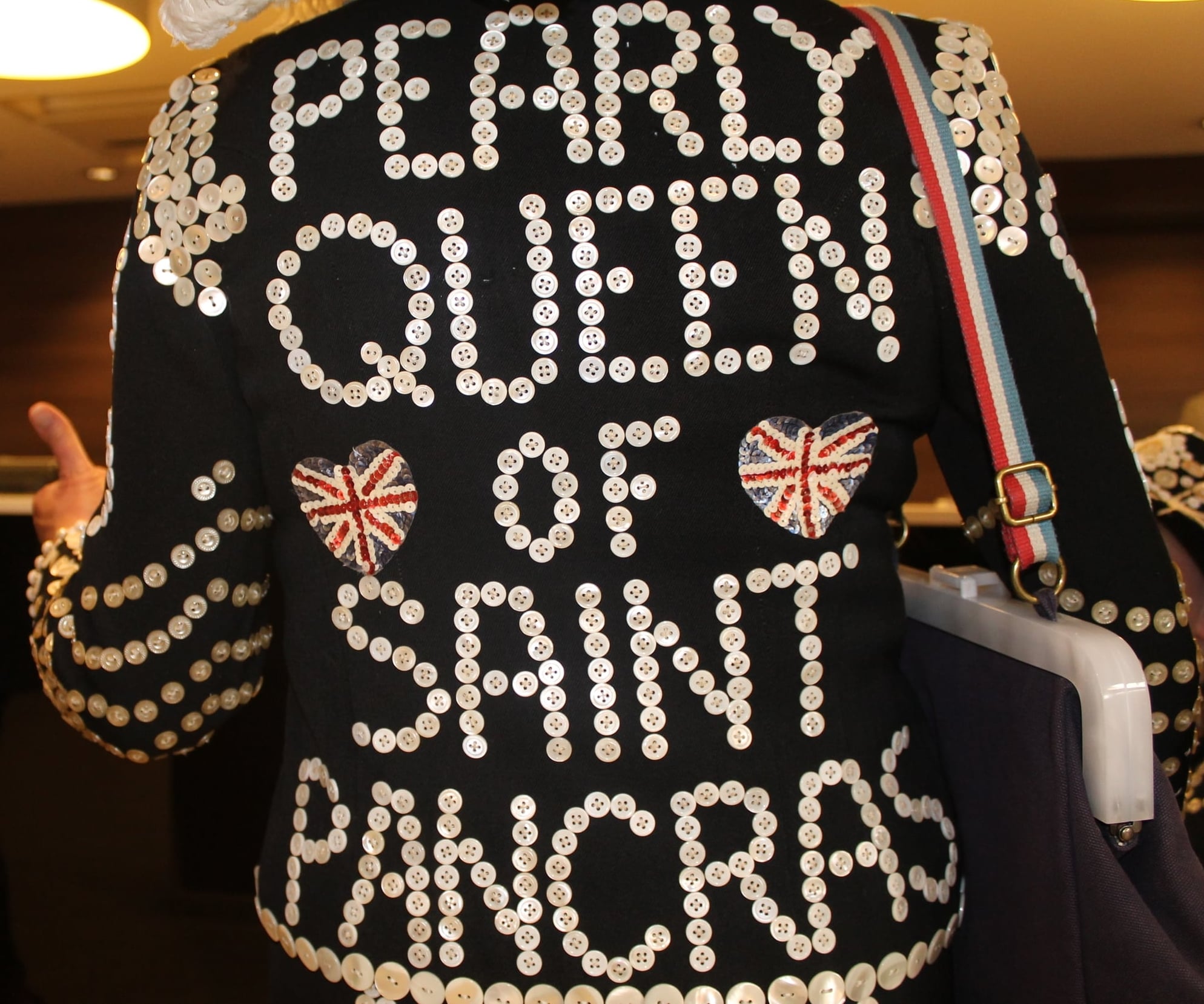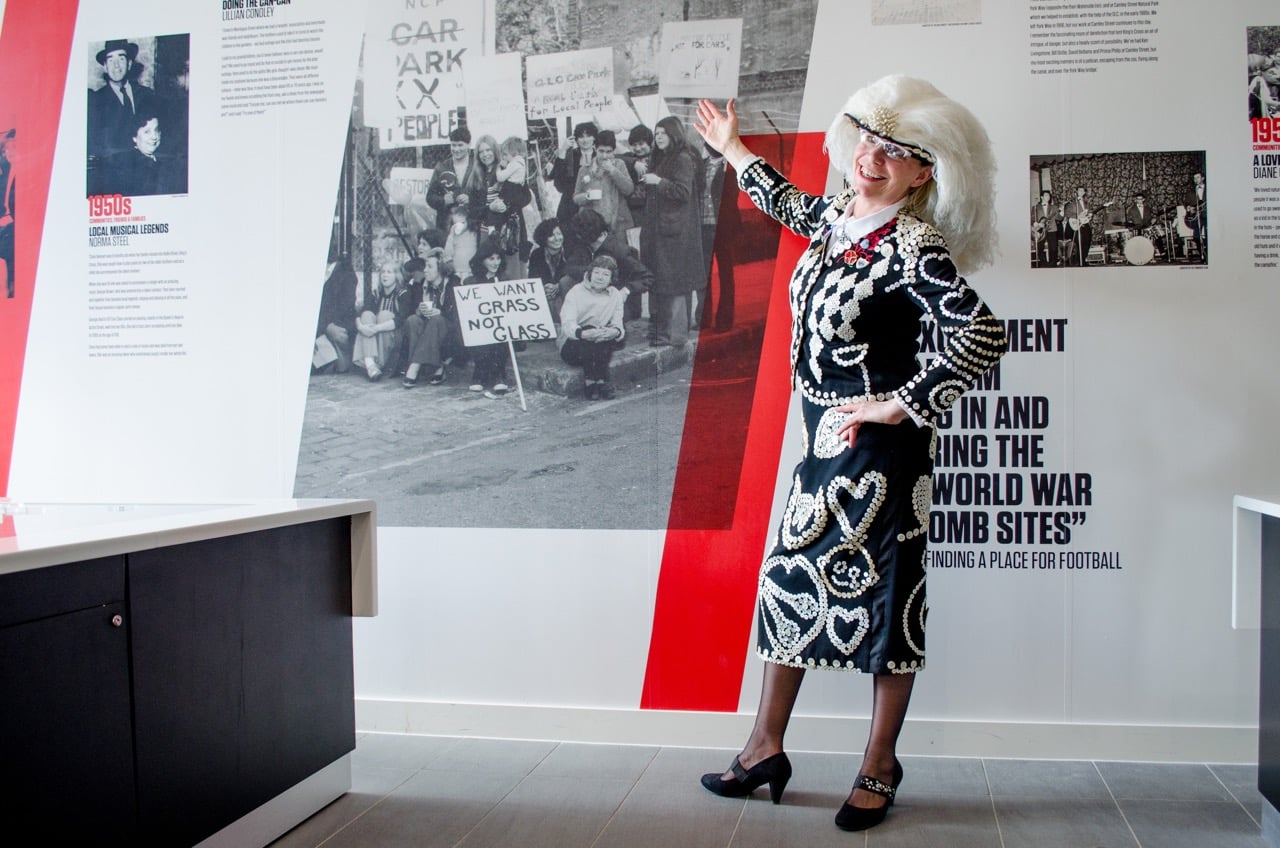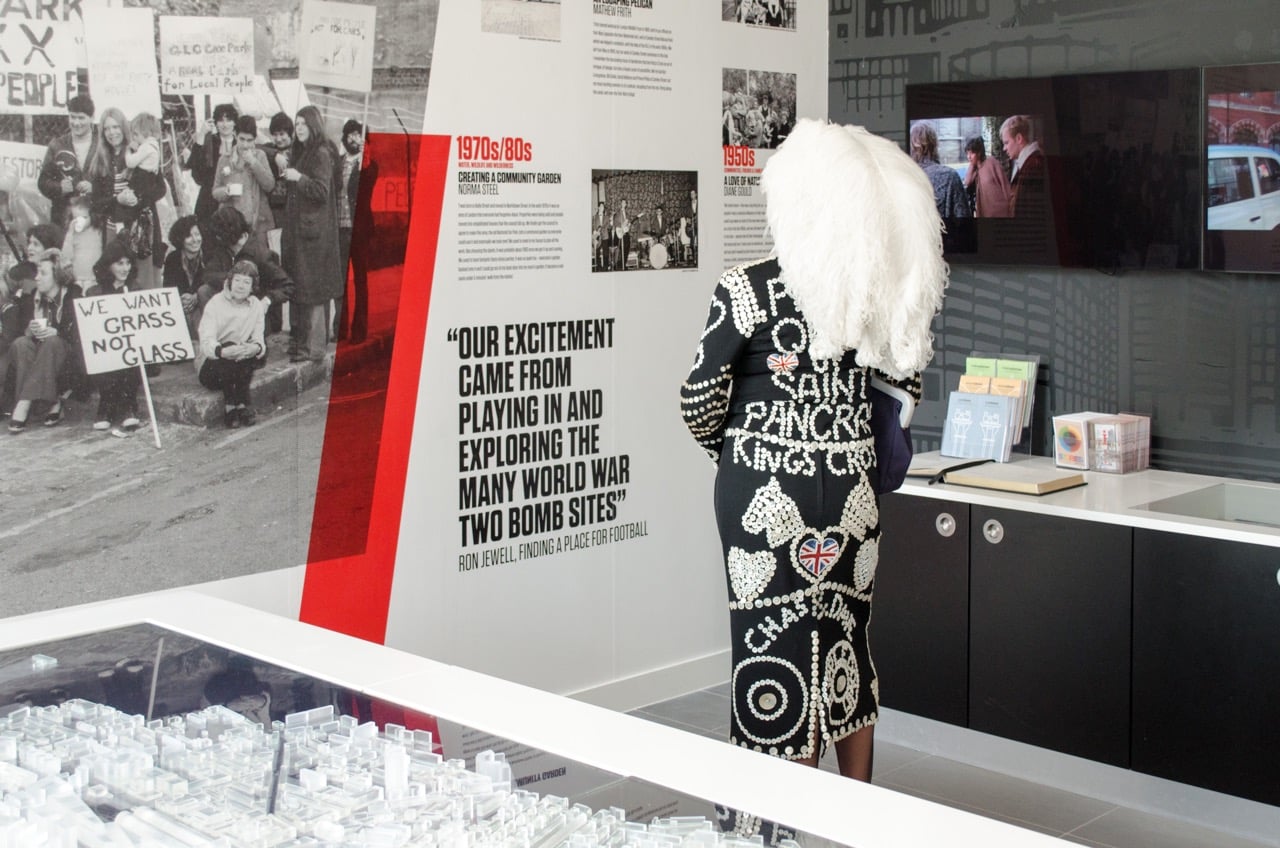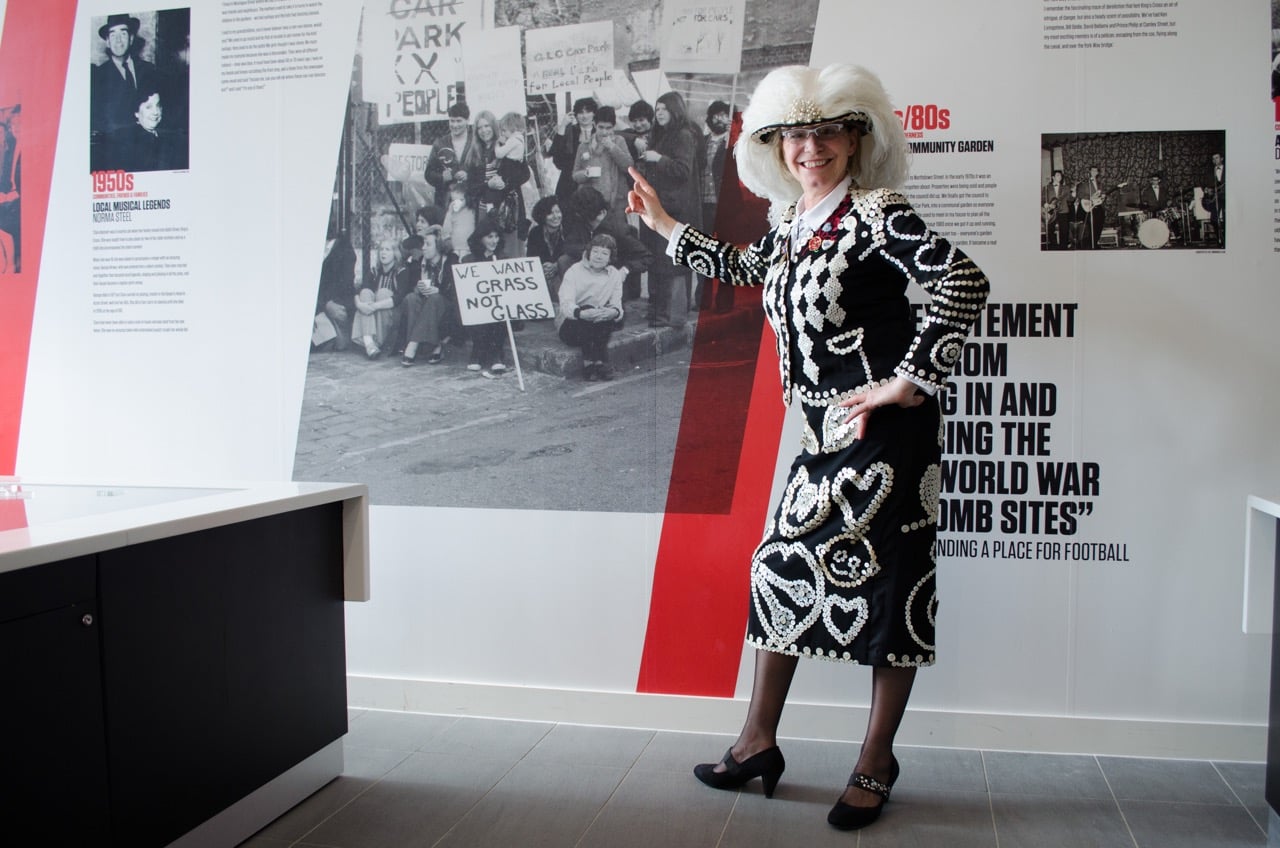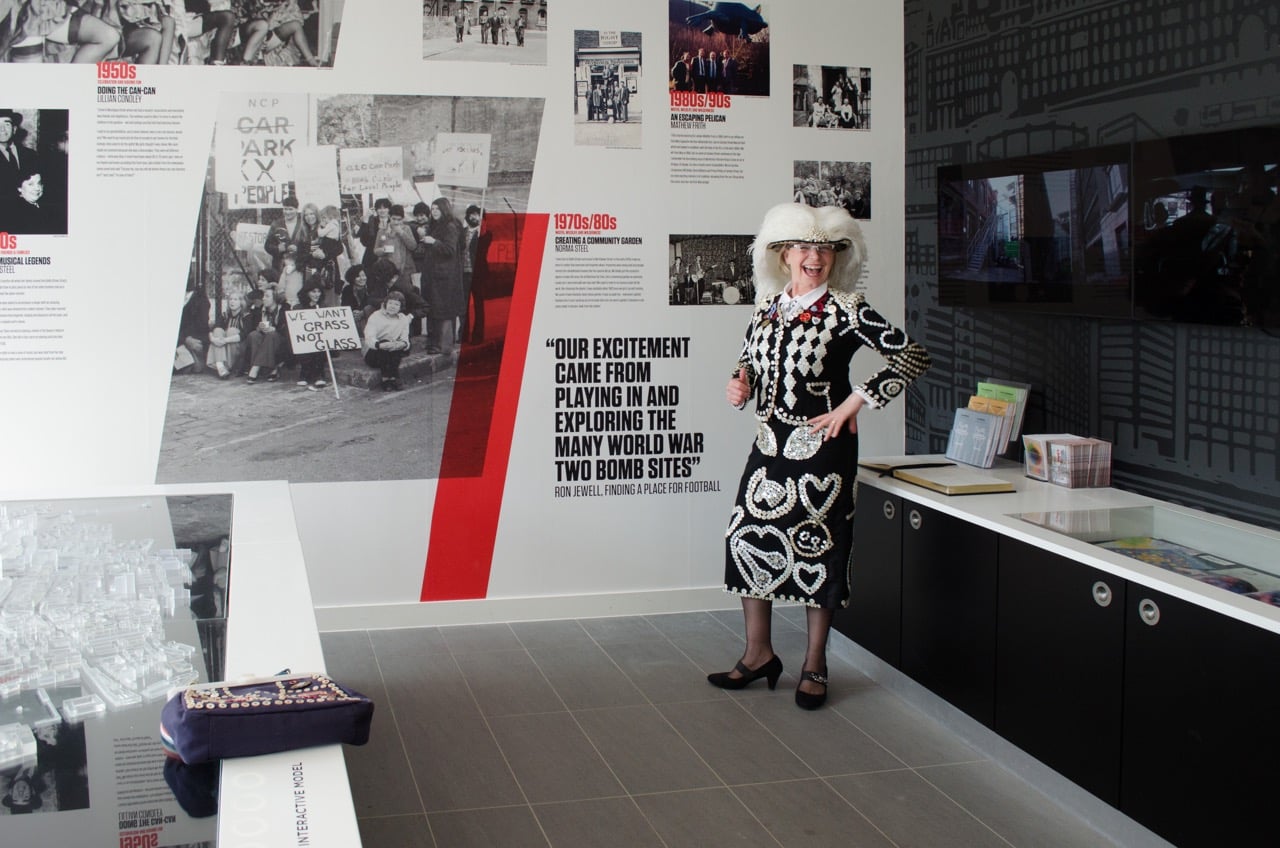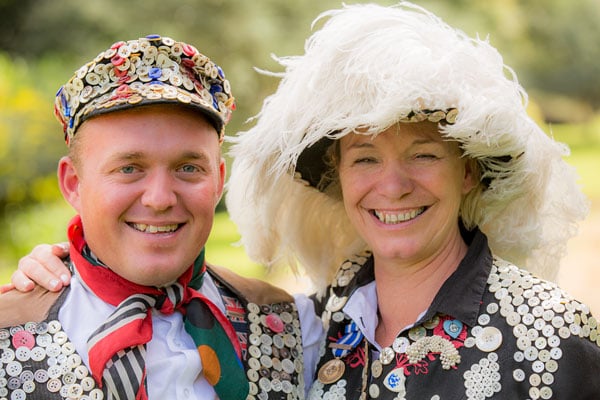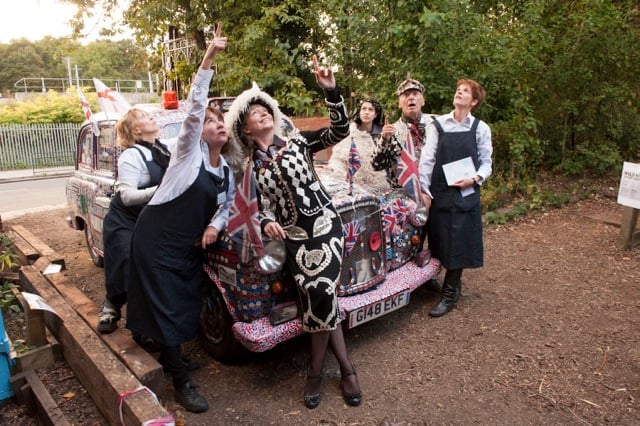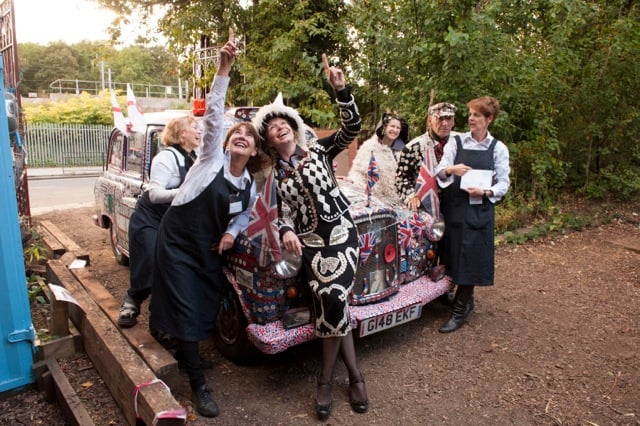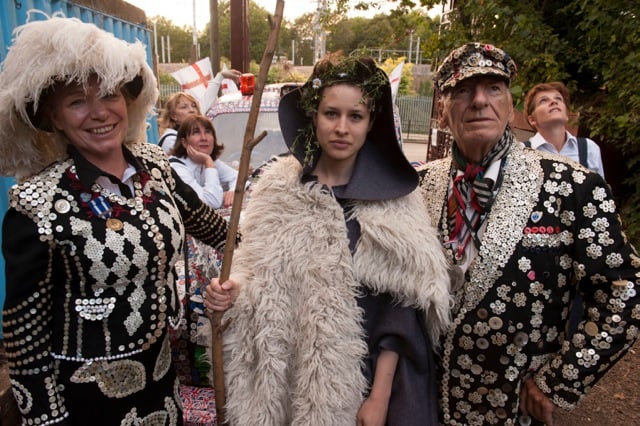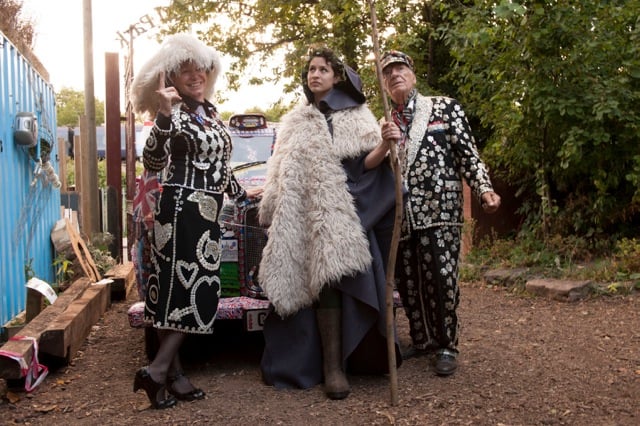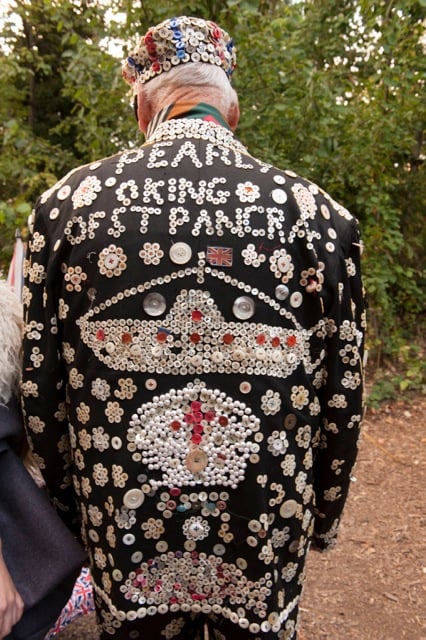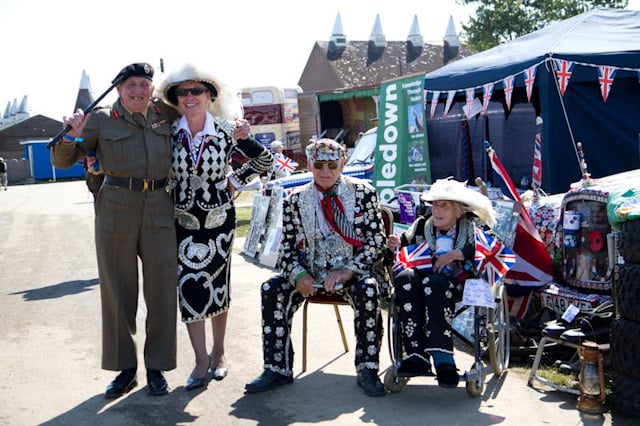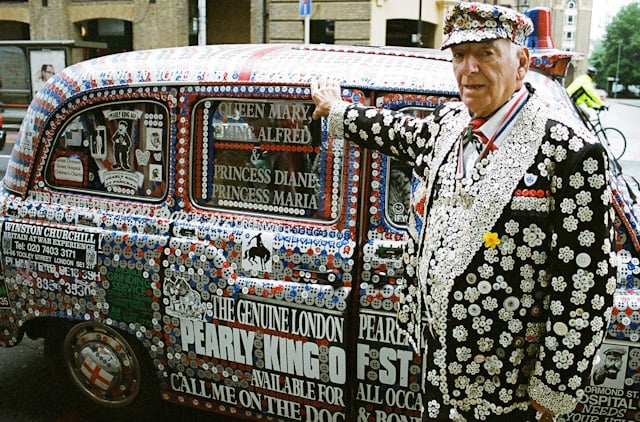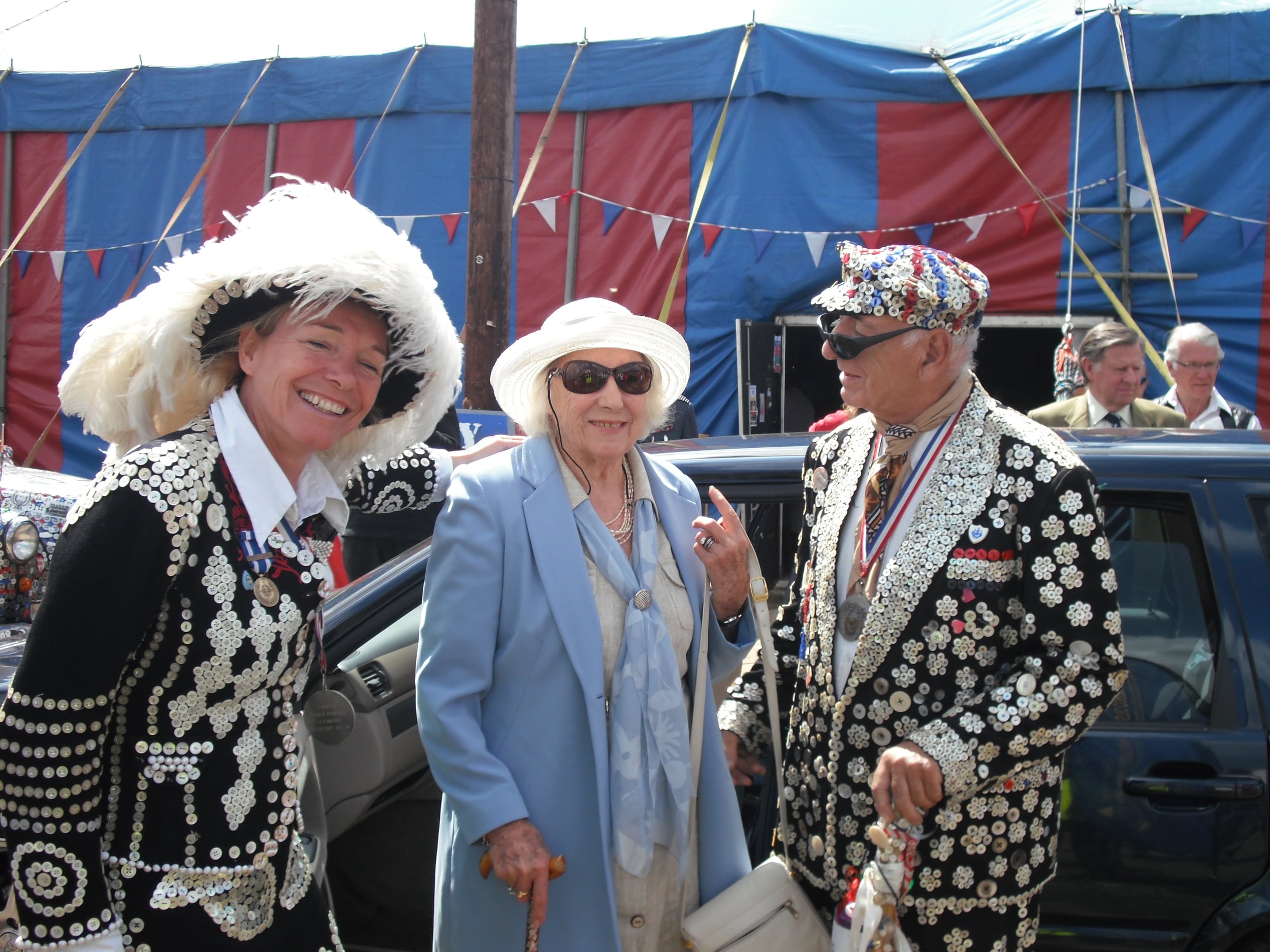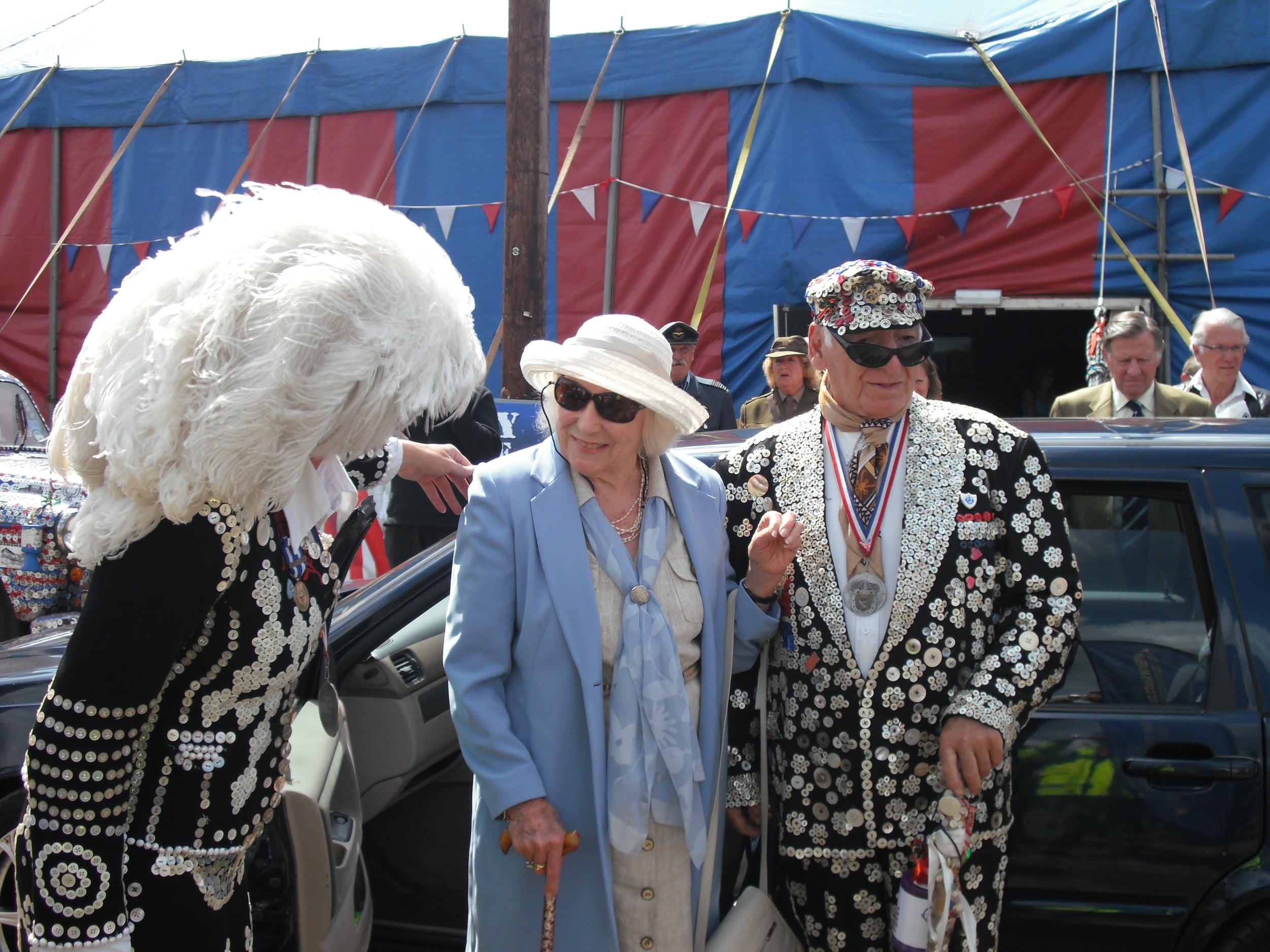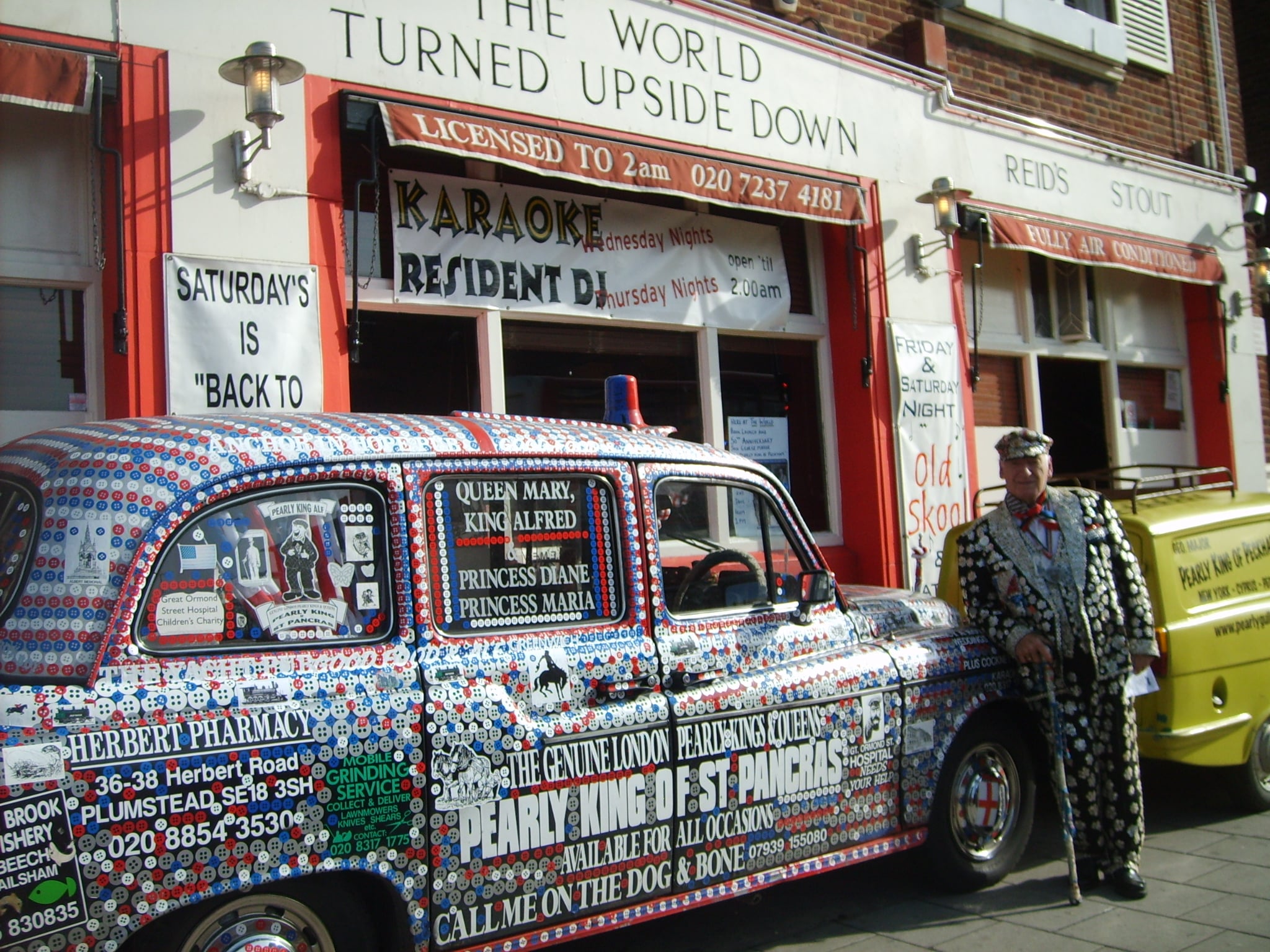The tradition of Pearly Kings and Queens originated in 19th Century Victorian London. They evolved from Coster Kings and Queens, who were elected as leaders of London’s street traders, Costermongers, costard being an apple, monger being a seller.
Costers admired style and panache and with the typical Coster cheek they imitated the wealthy West End society, who by the early 19th century had developed a fashion for wearing pearls and parading in their finery on Sundays in the fashionable London parks – the Costers took it one step further by sewing lines of pearl flashers on their battered hand-me down waist coats, caps and working trousers and started doing their own parade – the ‘Lambeth Walk’.
Although each Coster family traded independently, they remained loyal to other Costers, collecting for those that fell on hard times. Their philosophy to life was one of fate, some you win some you lose, when things went bad you just had to pick yourself up and start all over again.
So Henry Croft started the Pearly tradition on the streets of Somerstown, spreading the word about the buttons to his nearest and dearest. Very soon he had persuaded his good friend George Dole to start sewing - and The Pearlies of St.Pancras came into existence.
The costers were a mainstay of London life dating back to the 11th century. Unlicensed and itinerant and often hounded by the authorities, they cried their wares with vigour and panache.
The transformation to the complete pearly costume as we know them today finally came in the 1880s through a road sweeper and rat catcher by the name of Henry Croft.
There are many myths and stories about how he ended up wearing the first suit. The most colourful one tells that he came across a discarded shipload of pearl buttons on the mud banks of the Thames. Wherever he actually found them, he set about smothering a worn out dress suit and top hat with 60,000 smoked pearl buttons incorporating patterns, symbols and slogans such as:
'All for charity and pity the poor'
Henry was an orphan and was brought up in a rat infested workhouse. He was particularly influenced by the Costers outlook on life, of helping those less well off, even if you had little yourself. Henry caused such a stir in his pearly suit that when he joined the Costers on their hospital fund raising parades and carnivals his shimmering outfit delighted onlookers and worked wonders in raising funds for the charities.
Costers admired style and panache and with the typical Coster cheek they imitated the wealthy West End society, who by the early 19th century had developed a fashion for wearing pearls and parading in their finery on Sundays in the fashionable London parks.
Today the Pearly Kings and Queens of St. Pancras give up their spare time whenever they can to help a good cause. Today they carry on the work of their ancestors spreading goodwill with cockney spirit and cheer in their very own Pearly Cabs!
